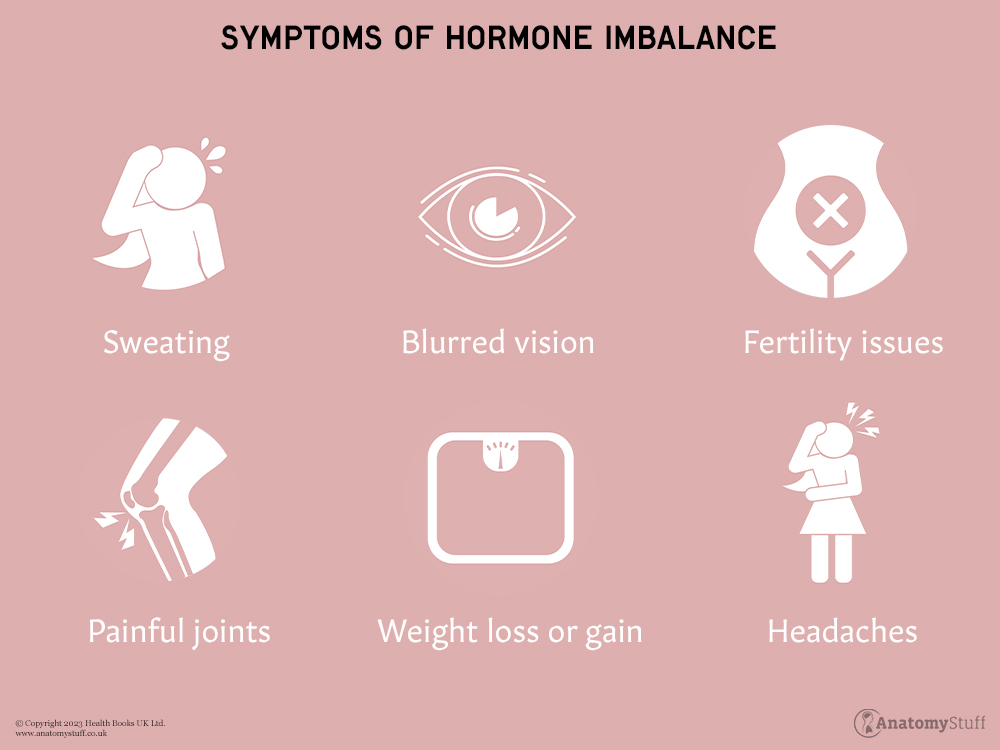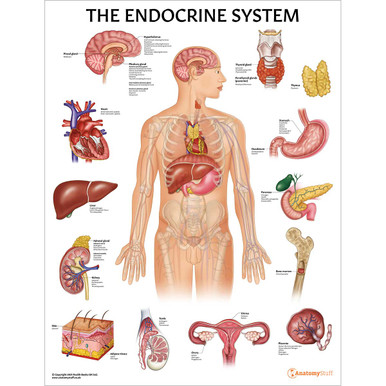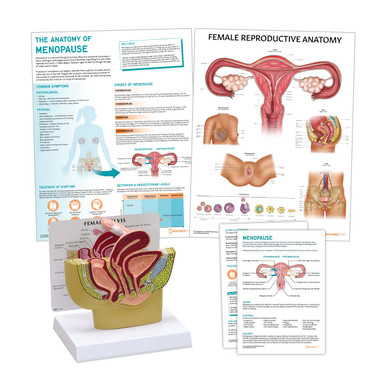Understanding Hormones – Your Ultimate Guide to Hormones and Hormonal Imbalances
Let’s face it; our hormones sometimes make us emotional messes. One minute we could be fine and happy, and the next, we could sob our hearts out at a children’s cartoon or an advert on the TV.
While it’s true that our hormones can be particularly influential on our bodies and our moods at times such as puberty, when ovulating, when pregnant, or during menopause, the truth is that our hormones play vital roles in everyday living. Every second, hormones are responsible for countless physiological processes within our bodies.
Hormones affect everything we do and play key roles in every aspect of everyday health. The problem is that hormonal imbalances are unfortunately very real and can have devastating impacts on our health, both physically and mentally.
To help you get a better understanding of hormones and hormonal imbalances, we’ve compiled this helpful guide. Take a look, and soon you’ll understand hormones much better.
What are hormones?
Kicking things off today, we’ll start with the obvious question and look at precisely what hormones are.
Hormones basically function as chemical messengers in your body that communicate with your cells and tell them what to do, when to do it, and how to do it.
Secreted directly into the bloodstream, hormones are then carried to the cells in your organs and tissues. Think of hormones like computer coding for the cells almost. Hormones affect everything we do, how we feel, how we look, how hungry we are, how sleepy we are, how tired we are, how sexually aroused we are, and much more besides.
While scientists are still not certain about the precise number of hormones in the body, it is estimated that there are around 50 hormones in the human body.
Women, in particular, have two primary sex hormones that can influence different processes such as their health, their mood, fertility, sexual arousal, energy levels, and more besides. These are oestrogen and progesterone.
Oestrogen
Oestrogen is arguably the most commonly recognised female hormone and is the female equivalent of testosterone.
Before a woman enters menopause, oestrogen is primarily produced by the ovaries. During and after menopause, the ovaries stop producing oestrogen, and this causes periods to stop, and other symptoms such as hot flushes and sleep disturbances may occur.
After menopause, the body still makes small amounts of oestrogen in the adrenal glands (small structures above the kidneys) and from fat cells.
Oestrogen can affect menstruation, puberty, fertility, weight, appetite, mood, and much more besides.
Progesterone
Progesterone is a hormone produced within the ovaries following ovulation. Again, the placenta produces a small amount during pregnancy.
Primarily, progesterone is created to support pregnancy, prepare the uterus lining for a fertilised egg, and suppress oestrogen production levels following a pregnancy. During and after menopause, just like oestrogen, the production of progesterone declines.
Where do hormones come from?
Hormones are secreted from endocrine glands within the body, which make up a part of the endocrine system.
The endocrine system is a messenger system in the body comprised of glands and organs. This system uses hormones to coordinate and control the body’s metabolism, reproduction, energy levels, growth, development, and responses to stimuli.
The glands produce and secrete minuscule amounts of hormones into the bloodstream, yet tiny amounts can have enormous effects on the body and mind.
Primary endocrine glands in the body include the following:
• Pituitary gland
• Adrenal glands
• Pancreas
• Ovaries
• Thyroid gland
• Pineal gland
• Thymus
Hormones and disease
As beneficial and important as hormones are for our bodies, even the slightest imbalance or issue with any one of our hormones or endocrine glands could lead to all manner of health issues and complications.
Endocrine diseases, for example, can be caused by hormonal imbalances. If certain hormone levels are out of sync and are either too high or too low, this may cause an endocrine disorder or disease.
Symptoms of a hormonal imbalance
A hormonal imbalance is precisely as it sounds. When you either have too little or too much of a particular hormone or hormones, this is a hormonal imbalance.
Of course, hormones can fluctuate, but sometimes the endocrine glands are to blame, resulting in hormonal imbalances. Some tell-tale symptoms of a hormonal imbalance include:
• Weight gain
• Fatigue
• Mood swings
• Loss of appetite
• Sweating
• Rapid heart rate
• Reduced blood pressure
• Increased blood pressure
• Hunger
• Thirst
• Insomnia
• Frequent urination
• Reduced sex drive
• Increased sex drive
• Painful joints
• Weakness
• Sudden weight loss
• Thinning of or loss of hair
• Poor mental health
• Fertility issues
• Blurred vision
• Headaches
• Water retention
• Acne
• Irregular menstrual cycles
• Rashes
• Other physical and emotional changes

What causes a hormonal imbalance?
To understand more about something, it often pays to understand what causes it in the first place. With hormonal imbalances, this is no different.
The problem with hormone imbalances is the fact that a whole host of different things can cause them. All it takes is one slight change to knock your hormones out of sync, resulting in a chain reaction that gets progressively worse.
Some common causes of hormonal imbalances in women include:
• Puberty
• Menopause
• Pregnancy
• Stress
• Drugs and medications
• Use of steroids
• Growths, tumours etc
• Injury or damage to an endocrine gland/glands
• Hormone therapy
• Cancer treatments
• Eating disorders
• Unhealthy diets
• Breastfeeding
• PCOS – Polycystic Ovary Syndrome
• Birth control medications
• HRT – Hormone Replacement Treatments
Tests and diagnosis to check for a hormonal imbalance
Finally, before we wrap things up today, we’ll leave you with a look at tests and ways of diagnosing hormonal imbalances in the body.
Because endocrine glands secrete hormones directly into the bloodstream, the good news is that hormone imbalances can usually be detected with a simple blood test. This test can detect imbalances and irregularities in the thyroid, with cortisol, oestrogen, and testosterone.
It is worth noting that women’s blood tests differ from men’s because they naturally have different levels of certain hormones in their blood, and vice versa.
Once the blood sample has been taken, it will then be sent off to a lab and examined. The results will then enable potential hormone imbalances or irregularities to be diagnosed. From here, the necessary treatment can be planned and initiated, allowing you to live a full and healthy life!
No doubt hormones play a significant role in our lives, and things get tricky when there’s an imbalance. Still, a better understanding and awareness of hormone imbalance can alert us early if there is a problem so that we can get treatment promptly. Be aware of hormone imbalance, know the signs, and allow yourself to live a quality life where hormones don’t take over!
Related products
View All












